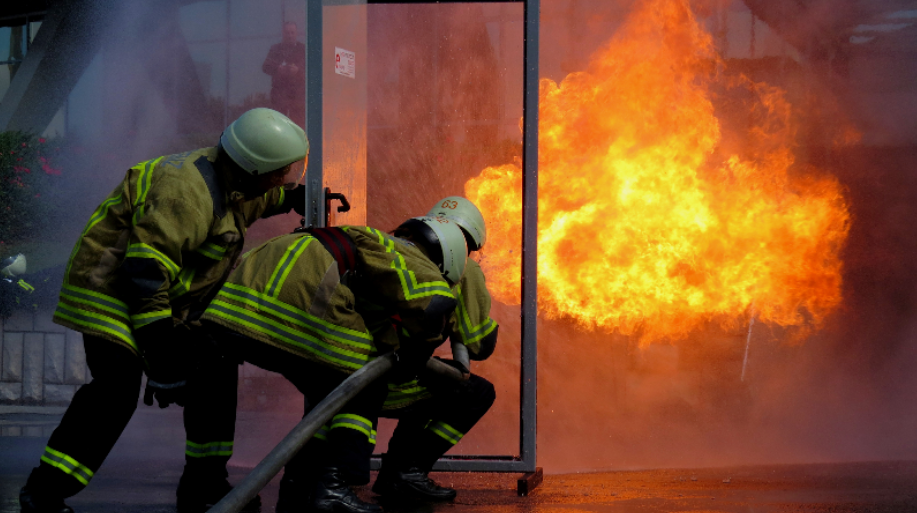Image Source: Yandex.com
Emergency lighting is a critical component of Fire safety measures in London, ensuring that buildings remain safely illuminated during power outages or emergencies fire. Understanding its importance, functionality, and regulatory requirements is essential for both residents and businesses in the city, highlighted by the issuance of an Emergency Lighting Installation Certificate. Let’s delve into a comprehensive guide on emergency lighting and fire safety in London to enhance awareness and preparedness fire.
Importance of Emergency Lighting in Fire Safety
In the event of a fire, visibility is crucial for safe evacuation and rescue operations. Emergency lighting systems provide essential illumination to escape routes, stairwells, and exit signs when normal lighting fails due to power cuts or smoke. This visibility helps occupants navigate safely through potentially hazardous conditions, reducing the risk of injuries and improving response times for emergency services.
Types of Emergency Lighting Systems
Emergency lighting systems in London are designed to operate in various scenarios, from sudden power failures to full-scale building evacuations. These systems typically include:
- Escape Route Lighting: Illuminates paths leading to exits and emergency exit doors.
- Open Area Lighting: Ensures visibility in large spaces such as halls, lobbies, and assembly areas.
- High-Risk Task Area Lighting:** Provides illumination for critical tasks or areas where hazards are present.
- Anti-Panic Lighting: Maintains visibility and prevents panic in densely populated areas like shopping centers or transport hubs.
Each type of emergency lighting serves a specific purpose in ensuring comprehensive fire safety coverage within buildings across London.
Regulatory Requirements and Standards
London adheres to strict regulations and standards governing the installation and maintenance of emergency lighting systems. These regulations ensure that buildings comply with safety requirements outlined in the Building Regulations and Fire Safety Order. Requirements cover aspects such as the duration and brightness of emergency lighting, placement of exit signs, testing frequencies, and the qualifications of personnel responsible for maintenance and inspections.
Maintenance and Testing Procedures
Regular maintenance and testing are essential to ensure the reliability and effectiveness of emergency lighting systems. London building owners and managers are responsible for scheduling routine inspections, functional tests, and periodic servicing of emergency lighting components. Maintenance tasks include checking batteries, verifying light intensity, cleaning fixtures, and conducting full system tests to simulate emergency conditions. Compliance with testing schedules helps identify and rectify issues promptly, ensuring that emergency lighting systems operate as intended during emergencies.
Integration with Fire Detection Systems
Emergency lighting often integrates with fire detection and alarm systems to provide a coordinated response to fire emergencies. When a fire alarm activates, emergency lights automatically switch on to guide occupants to safety. Integration ensures timely response and enhances the overall effectiveness of emergency preparedness plans in London buildings.
Emergency Lighting in Residential Buildings
While emergency lighting regulations primarily focus on commercial and public buildings in London, residential properties can benefit from voluntary installation of emergency lighting systems. Homeowners may choose to install battery-operated emergency lights in key areas such as hallways, staircases, and bedrooms to enhance safety during power outages or emergencies.
Educating Occupants on Emergency Procedures
Effective fire safety in London relies on educating building occupants about emergency procedures and the location of emergency exits and lighting. Regular fire drills and training sessions familiarize residents, employees, and visitors with evacuation routes, emergency lighting systems, and procedures to follow in the event of a fire or power outage. Increased awareness promotes a culture of safety and preparedness within buildings across the city.
Emerging Technologies and Innovations
Advancements in technology continue to drive innovation in emergency lighting systems. LED technology, for example, offers energy efficiency, longer lifespan, and improved brightness compared to traditional lighting sources. Smart emergency lighting systems equipped with sensors and automated controls enhance responsiveness and efficiency during emergencies. These innovations contribute to safer and more resilient buildings in London’s evolving urban landscape.
Conclusion
Emergency lighting is a cornerstone of fire safety in London, providing essential illumination during power failures and emergencies to facilitate safe evacuation and rescue operations. Understanding the importance of emergency lighting, regulatory requirements, maintenance procedures, and integration with fire safety systems is crucial for ensuring the safety and well-being of residents, employees, and visitors in buildings across the city, supported by the expertise of EICR Cert. By prioritizing compliance, regular maintenance, and education on emergency procedures, Londoners can enhance fire safety preparedness and contribute to creating safer living and working environments in one of the world’s most vibrant cities, If you want to stay updated with posts like this, please follow us on CRISPME.







